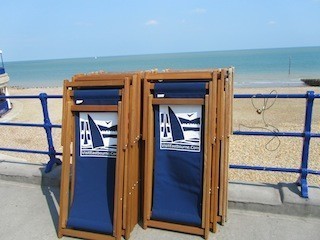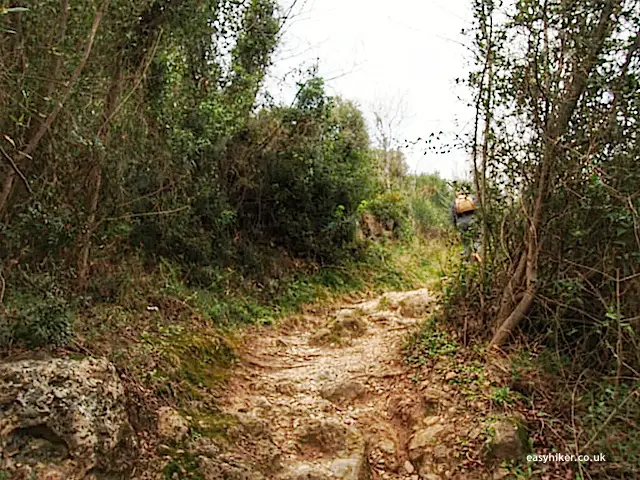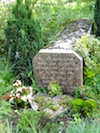For many years, Aix-en-Provence had cornered the market for Picturesque Market Towns In Southern France. Easy-to-reach (just over an hour by train from Marseille) and pretty-to-look-at, it ticks all the important boxes for visitors.
If you came from Northern Europe or North America and wanted to see a Typical Town In Provence, old men playing boule on leafy town squares, that sort of thing, Aix was the place to go. (It still is – even if it was too cold for the old guys when we visited Aix early in the spring.)

Then, however, the Aix Tourism Board appears to have decided that this was no longer enough. I am saying that because it seems to me that, over the last few years, more and more of the town’s touristic marketing seems to focus on Aix’s most famous son, the painter Paul Cézanne.
Perhaps Aix had cast a jealous eye on the success of neighbouring Arles and its strategy of branding itself as the “town of van Gogh” – but one thing is for sure: wherever you go in Aix these days, you will encounter Cézanne right, left and centre.
Even the self-guided city walk has been called the “Cézanne Walk”, …

… intending to make you see the city through the eyes of Aix’s greatest son.
This, however, has resulted in a few problems, as we shall see.
The Paint and the Pedantry – in the Footsteps of Cezanne in Aix en Provence
The walk starts outside the Tourism Office, where a statue of Cézanne sets the tone, …

… and then takes you to the Rue Cardinale for the College Mignet.

This is where Cézanne met Emile Zola, his best and, at times, only friend – until, that is, the publication of Zola’s novel L’Oeuvre (The Masterpiece) whose central character, a talented but catastrophically unsuccessful painter, had a little too much of Paul Cézanne about him for Cézanne’s taste, and they never talked again.
Cézanne’s friendship with Zola is certainly the most distinctive episode in his biography, incidentally also the central theme of the only movie ever made about his life, the French Cézanne and I.
Cézanne and I tells an interesting story of contrasts: Cézanne belonged to one of the town’s richest families, whereas Zola was the son of a successful Italian engineer (Zola senior had designed a river dam near Aix that is still named after him) who had, however, died early and left his wife with a meagre pension.
From these humble beginnings, Zola junior went on to become France’s most successful and best paid writer, although his potboiling style has not aged well, and he is today mainly remembered for his heroic willingness to risk everything, wealth and social standing, by taking a principled stand in the Dreyfus affair (“J’Accuse”).
Whereas Cézanne, a solitary and isolated figure for nearly all his life, is today recognized as the “father of all modern artists” (Picasso) and a “god of painting” (Matisse).
The Cézanne Walk is very strong on the various residences inhabited by the painter’s family, which range from the respectable (Rue Matheron, the family home from 1850 to 1870) …

… to the positively splendid, the Jas de Bouffan, the former residence of the Provincial Governor, which was bought by Cézanne père at the peak of his commercial success in 1859.
Paul inherited the pile on his father’s death in 1886, converted it into an atelier and sold the building in 1899. Now a museum, the jas de Bouffan is currently closed for major renovation works, so there is no photo of it here.
Cézanne senior was a member of the town’s elite, owning the largest local bank. He had, however, originally made his fortune as a hat maker.
The facade of the Cézanne hat factory on Cours Mirabeau still displays the old (if now faded) advertising of his “chapellerie”.

The small street of Rue Boulegon plays a key role in the family history. The building on no. 13, just about visible to the right, is the place where the family-owned bank was transferred to in 1856.
A few houses further down, on no. 23, you can find the building where Paul Cézanne died in 1906, having lived and worked in the flat-cum-studio since 1899.

I bet that, by now, you can spot the main problem with this walk.
This main problem is not the tour’s pedantic attention to the finer details of Paul Cézanne’s family history, although not all of the 31 stops are equally indispensable. (Do we really need to know where Paul’s grandmother lived?)
But since almost every street and every major building in Aix has a connection with the Cézanne family, you are at least guaranteed that you will not miss anything of importance.
City Hall, for example, is the place where Paul married his Hortense (wife, model and perpetual thorn-in-his-flesh) in 1886 …

… while the Cathedral Saint Sauveur is the church where his sister Rose was baptized …

… and if that is not enough of a Paul Cézanne connection for you, you can cast a glance at the building right opposite – this is the university faculty where Paul studied law, albeit briefly, before he left Aix for Paris.
What you don’t get on the tour, however, is a single stop that relates directly to the artist’s work, no motive or even a reference to any of his paintings.
This is not the fault of the Aix Tourism Board: Cézanne – unfortunately for his home town – was simply not the kind of painter who would routinely leave behind a visual record of the places in his life, unlike Van Gogh who enthusiastically painted street scenes, restaurant interiors and historic buildings of nearly every town he ever visited.
But given the absence of any visual motives around which one could shape the narrative of a “Cézanne Walk”, all that is left is the painter’s biography. And what narrative can be drawn from Cézanne’s life?
Well, to be polite and respectful, let us just say that you would not call a Cézanne biography “Lust for Life” (that was van Gogh) or “The Agony and the Ecstasy” (Michelangelo).
There is certainly a reason why Hollywood was never interested in Cézanne: too little drama, too little passion. Just a curmudgeonly southerner – and the pretty scenery of a Picturesque Market Town In Provence. Not enough for a major blockbuster.

But here is the good news. If you are looking for an easy-to reach, convenient and painless Cézanne Pilgrimage Route in Aix, we may just have the right ticket for you.
I wonder if you can already guess where and what that might be.







